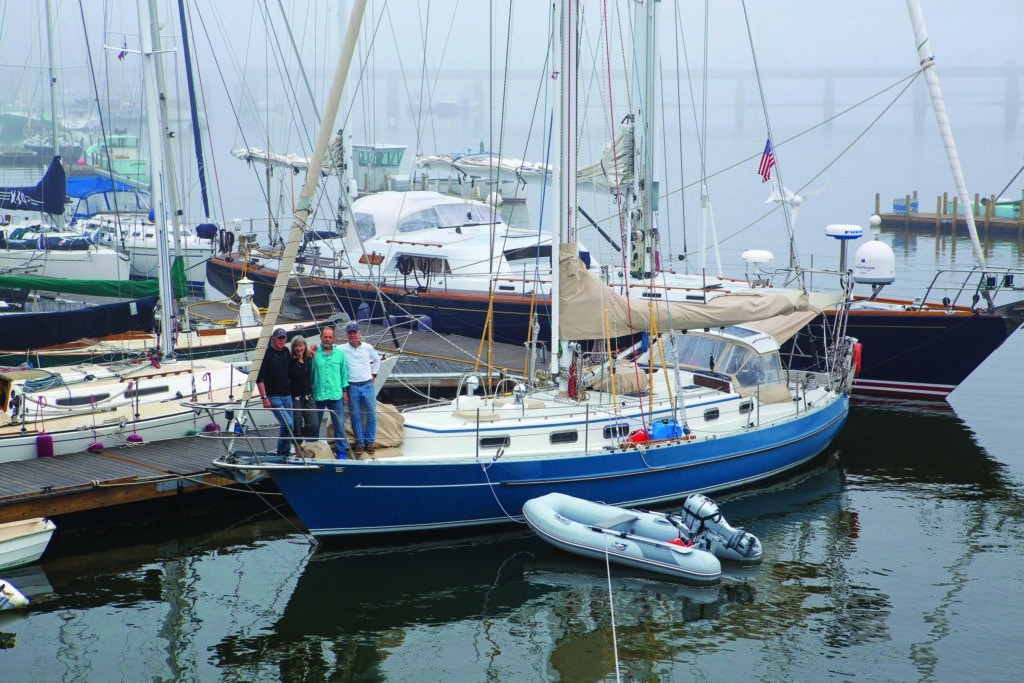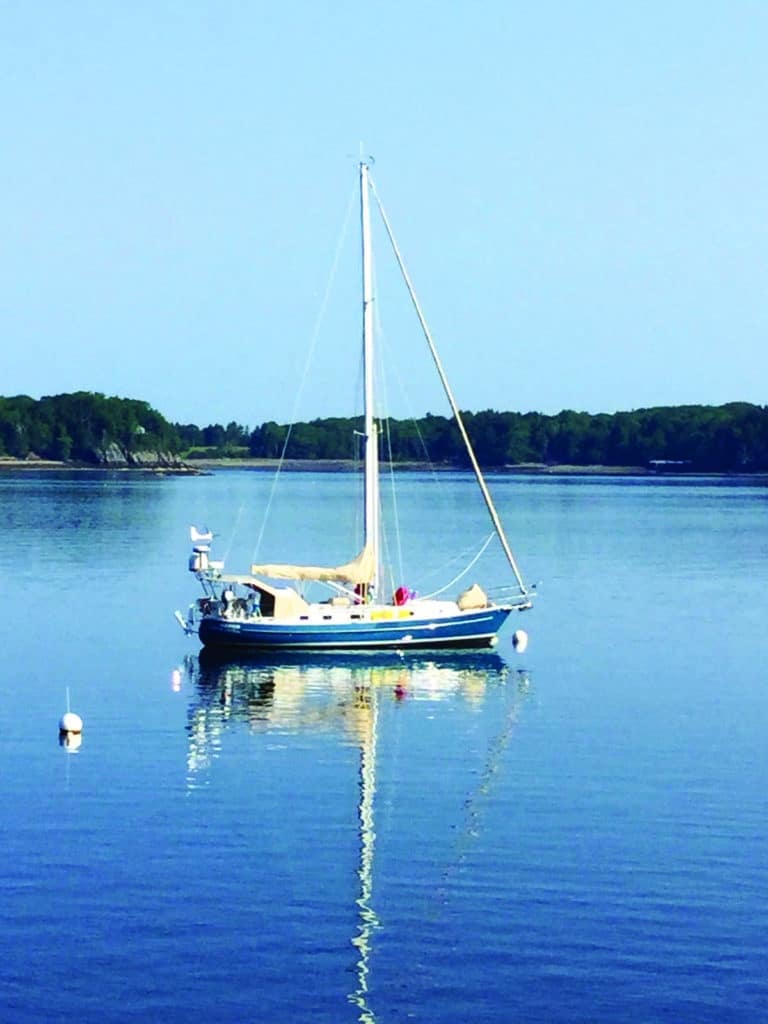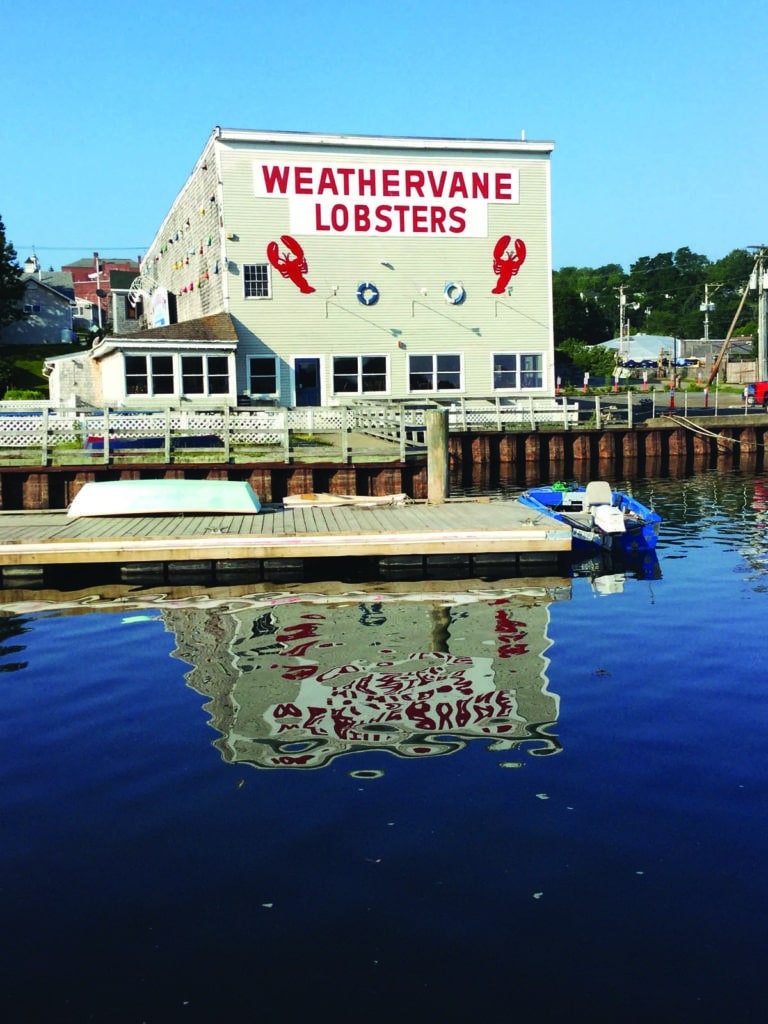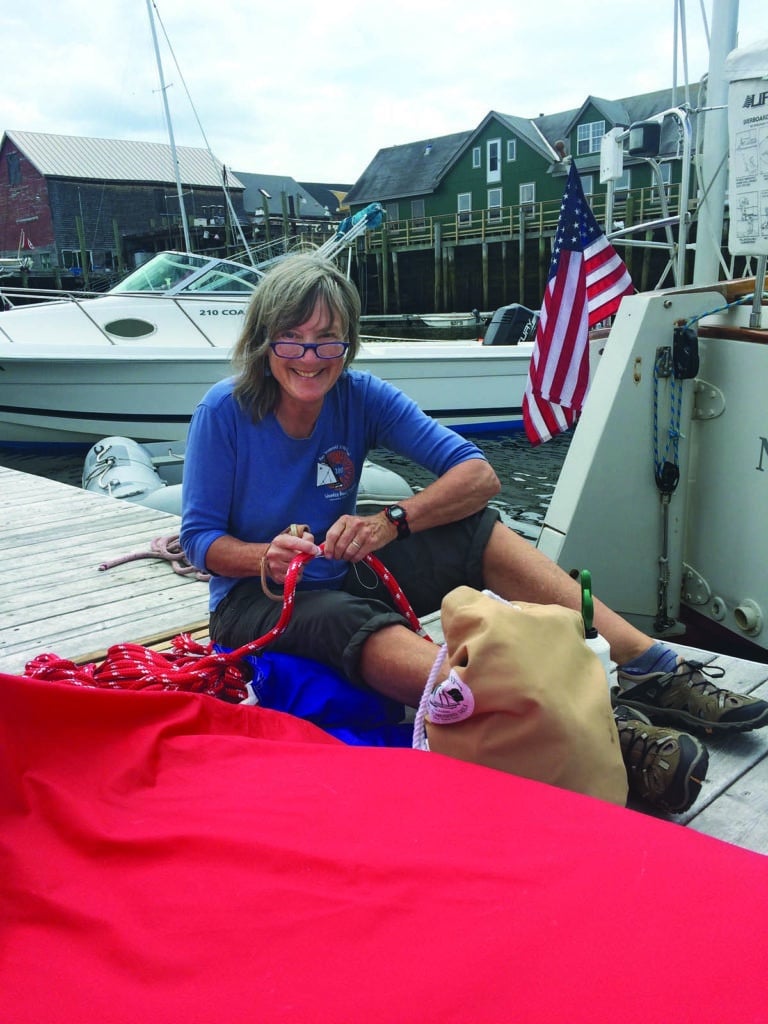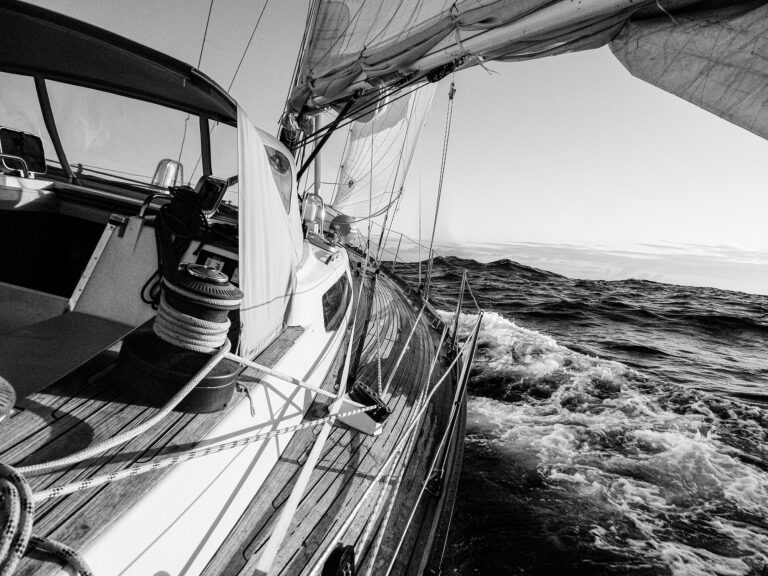Day 1: Friday July 11
At 0800, fuel tanks topped off, on a favorable ebb flowing out of Maine’s Penobscot Bay, we were off to Scotland. Away we went. There were four of us aboard the Valiant 42 Eleanor of Hewes Point: skipper Dave Logan, from Seattle, the best all-around sailor I know; owner Billy Gammon, a neophyte offshore voyager from Texas, who was financing the endeavor and chasing a dream; mate Carol Hasse, a nurturing soul and instinctive mariner almost too good, and smart, to be true (and also an elite sailmaker whose Pacific Northwest loft, Port Townsend Sails, had built Eleanor’s very complete sail inventory); and me, a sailing writer out of Newport, Rhode Island.
I was there for a very simple reason: Logan had called me a year earlier and asked me to come. Even at the time, I realized it was a crazy idea that would add serious complications to my life. But hey, it was Logan. “Sure, Dave, I’m in,” I said. We’d become seriously tight sailing pals on a couple of adventures: a Transpac Race from Los Angeles to Hawaii on a Cal 40 with our buddy Mark Schrader, and an epic 28,000-mile circumnavigation of North and South America, also with Schrader, via the Northwest Passage and Cape Horn on a 64-foot cutter called Ocean Watch. I was proud of the fact that we had a solid track record together: We’d always done what we set out to do. The North Atlantic? Let’s have a go, bro.
It was during that Around the Americas trip, sponsored by the ocean conservation group Sailors for the Sea, that we’d met Billy. His wife was on the organization’s board of directors. He’d made a donation to come aboard in Lima, Peru, for the onward trip to the Galápagos Islands, ostensibly to learn more about long-distance sailing. Afterward he bought the Valiant, which was in disrepair in the tropics after the former owner committed suicide aboard, and eventually hired Logan as his consultant for a proposed transatlantic trip. Billy’s family owned vacation homes in Islesboro, Maine, so he had the boat delivered to the highly respected Front Street Shipyard in nearby Belfast for an extensive three-year refit between summers of local sailing.
Why Scotland? Good question. It was an ambitious destination, to say the least. But the late Ned Cabot, also involved with Sailors for the Sea, had planted that seed in Billy’s imagination during long chats together before Cabot lost his life in a tragic man-overboard incident aboard his J/46, Cielita, in the Labrador Sea in 2012. Cabot loved the remote high latitudes, and he’d found a boatyard he trusted in the Scottish port of Oban. Billy, hoping to emulate some of Cabot’s explorations in the coming years, had booked space in the very same yard for this fall. So Scotland it was.
Before we get too far, it’s important to note one very salient fact: We never got to Scotland. Not even close. What follows, then, is no account of a triumphant ocean crossing. Rather, it’s a cautionary tale — about going to sea on schedules, with an overreliance on unnecessary technology, on a boat not quite ready for an ultimate test. Poor decisions, bad luck, extreme weather and sketchy juju all came into play. No, it wasn’t all terrible; anytime you head offshore, you experience firsthand nothing less than beauty, wonder, mystery and even truth. And you always learn some things — about boats, weather, people and more. Yes, we learned some things.
We’ll start with the most obvious lesson: Going to sea on a schedule, with deadlines, is a foolish way to go to sea. One of my sailing mentors told me long ago, “Sailboats have destinations, not ETAs.” Once again, I ignored his sage advice. The previous fall, Eleanor’s crew had got together for a few days of coastal cruising to get to know the boat and work up a final punch list (see “Shakedown on Penobscot Bay,” March 2015); as we departed company after that little cruise, we marked X’s on our respective calendars. We’d absolutely, positively set sail this summer on July 1. That date came and went. We were already 10 days late, way behind the proverbial eight ball. And those 10 vanished days would play a major factor in everything that followed.
We all had obligations and a very tight window of time to step away from our everyday lives. In my case, I’m a single dad; my daughter had just finished her junior year of high school, a stressful accomplishment for both of us. I’d put her on a plane to visit her mom in Australia for the summer a few days earlier, and I’d been scrambling ever since. On the day I was supposed to be driving to Maine, I was instead en route to New York to serve as a pallbearer for my uncle — who’d passed away suddenly — when I was rear-ended in a four-car crash near the Mass Pike. Nobody was hurt, and I drove on. But it didn’t ease my frayed nerves. Nor did it change the fact that I needed to be back in Boston to pick up my kid on August 15. That was the one and only condition of my involvement. There was no Plan B.
Still, the reason we were late had nothing to do with anybody’s personal issues. Rather, it stemmed largely from the decision, made just two months earlier, to repower the boat with a new Westerbeke diesel, rebuild the generator, and install a whopping KVH TracPhone satellite-communications system and terminal. On multiple levels, this was serious overkill for a 42-foot cruising boat. The communications system required a completely revamped, custom stainless-steel transom arch. It was a massive work order. That alone slid the day we’d contracted to receive the boat from June 30 to July 3.
Nevertheless, Logan showed up from Seattle on June 30 and arrived at Front Street with Billy to check on progress. Eleanor was in disarray. A visit to the welding shop revealed the new arch was still being mocked up. Only later would Logan tell me, “It was pretty clear we had two to three weeks’ worth of work to do. I should’ve called you guys, returned to the airport and flown home immediately.” The writing was on the wall. Yet we pressed on.
By July 3, Hasse and I had finally arrived. We picked up the boat in Belfast and sailed to Islesboro, where for the next several days we loaded sails, tools and provisions. We also took in the Islesboro Fourth of July parade, a total hoot that lasted about 20 minutes. Back in Belfast on July 6, we bent to our various work lists. Hasse was very pleased with Front Street’s rigging work, and scurried about installing the high jacklines she prefers, fashioning a set of long boom preventers, bending the trysail onto its dedicated track, and affixing the custom bag her loft had fashioned for it under the boom. Logan was putting out all sorts of fires having to do with the generator, watermaker, electronic charts and myriad other matters.
Meanwhile, I tackled the elaborate satellite and onboard communication systems. A Front Street technician showed up and, in a 10-minute tutorial, demonstrated the respective breakers, how to turn on the units, where all the various USB ports were located, what modems or computers they connected to, and what software needed to be installed. He left us his phone number, said he was off for the week, and asked us to call with any questions. My head was spinning. IT is not exactly my forte.
Logan, Hasse and I also learned that the SSB SailMail system using a Pactor modem had not been set up, as we’d been assured it would, and it would take a week to get sorted. Hasse depended on that for weather.
Part of the reason I could join the trip was to blog and write about the passage for Cruising World. This, I soon learned (repeatedly), was the main reason Billy had purchased the used KVH system from a company called Global Marine Networks (GMN), despite the fact he’d never asked if I needed it. Actually, I’d already covered my own communication bases, bringing along a simple, effective, brand-new Iridium Go! unit that did everything I required: post positions to the Web, download weather, file stories and make phone calls.
Now, KVH is one of the leading cutting-edge companies in the entire marine industry, with a reputation beyond reproach, and its equipment and service are excellent, but in my opinion, only on the right vessels — larger ones, where their considerable energy demands are not an issue. For Eleanor, it was too much. If there was one major factor that sabotaged the trip, it may well have been the last-minute, knee-jerk decision to purchase and install the TracPhone.
But, since it was my responsibility (fault?), I spent the better part of the next three days on the phone with a GMN technician in Knoxville named Jason. I believe I was one of Jason’s more exasperating clients. At one stage, finally making progress in getting things working, he cried, “Are you a religious man? Did I just say that?”
The onboard Iridium phone — yes, we had one of those too — also proved problematic. The original antenna was wonky, so GMN overnighted us a second one, and we still couldn’t get it running until Logan, with a Leatherman, discovered and reinserted a single stray wire that had come adrift in the power clip. By the way, Dave Logan is a genius.
Because I’d spent so much time obsessing over everything else, I never did upload the weather and routing features from the Kiwi company PredictWind that work in tandem with the Iridium Go! Hell, I thought, at least with the TracPhone we’ve got reliable Internet and email — and, hence, access to plenty of weather info. We’ll address all that other stuff once we’re underway. After all, we had several weeks at sea ahead of us.
Then, Billy was incredulous when we told him we wouldn’t set sail on a Friday — we all subscribed to the well-established superstition that it was extremely bad luck to do so — but there were still plenty of last-minute jobs that needed to be addressed anyway. Finally, we rolled out of Belfast on the morning of July 11.
I can’t speak for everyone, but I was already fried. In fact, mentally, I’d never been less prepared to head offshore.
Herb McCormick is CW’s executive editor and the author of As Long As It’s Fun, the award-winning biography of Lin and Larry Pardey.
Read Part 2
